A Hot Time in DC
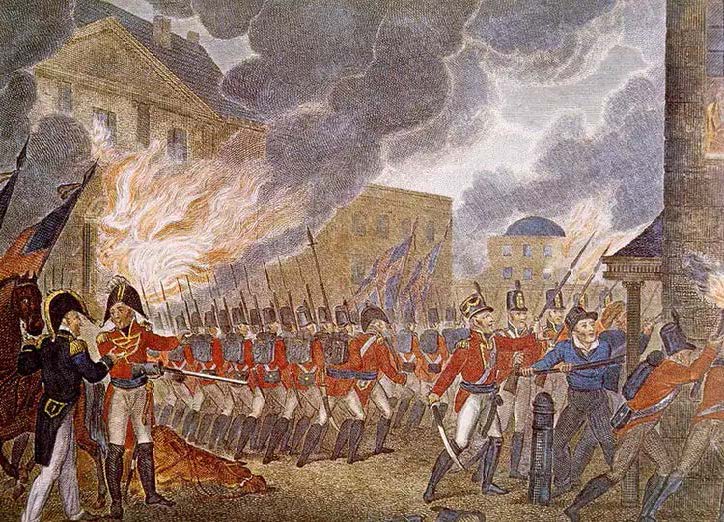
A Hot Time in DC
By David Petronis ~ 20 February 2024
Washington was burning!
Prior to the wanton destruction of all the Federal buildings, including the President’s House, the Capital, Treasury and Arsenal, by the invading British forces, the civil officers and most of the people were in earnest retreat. While President James Madison, Secretary of State John Monroe, and Secretary of War John Armstrong Jr. were fleeing out of the District of Columbia, Dolly Madison was gathering the full length portrait of George Washington which she had cut from its massive frame and then snatching the precious parchment on which the Declaration of Independence was written, and signed by 56 members of Liberty, finally left the White House with her sister in a carriage, borne away to safety beyond the Potomac River. The British, under General Robert Ross, entered Washington on the evening of August 24, 1814. On finding the dinner tables set with food and wine in the “White House” they dined. Our Second War for Independence now seemed very bleak indeed.
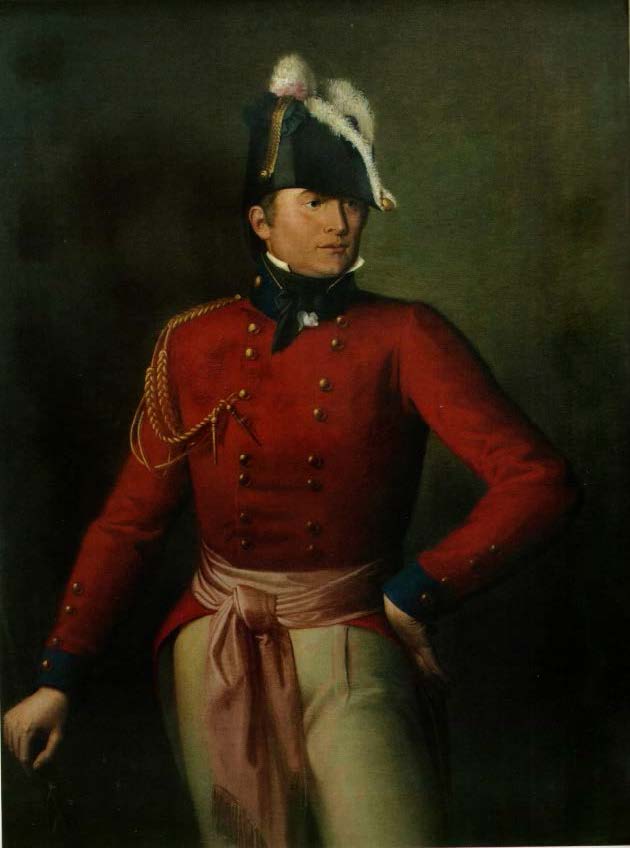
Since the treaty between the United States of America and the British Empire was signed by both in 1790, the British had been violating the terms from its inception. No longer could the Americans stand for the boarding of our ships and impressing our sailors into British sea service, among other violations of our northeast frontier, and for the very first time, war was declared by the US Congress on Great Britain on 18 June 1812.
We had won our Freedom a generation ago, but now we must win our unabridged Liberty in what is known as the War of 1812. However, at that time, America was not prepared for such a conflict. The only consolation was that the British war machine was being very occupied by Napoleon Bonapart of France and most of its army and navy were otherwise engaged. Soon, however, Napoleon was defeated at Waterloo and twenty thousand British regulars were released from Europe to engage in the war in America.
General Robert Ross was a seasoned Wellington officer and was put in charge of the British land forces now entering Washington. Vice Admiral Alexander Cockrane had issued an order to “destroy the seaport towns and ravage the country”. Ross was following in that decree and landed his army in Maryland being supported by a British fleet of ships under Admiral Cockrane. About 4000 British troops engaged in a fierce battle near Bladensburg just four miles from the Capital, opposed by the American General William Henry Winder. For four hours Winder’s army held out while the citizens of Washington fled the city. More British soldiers were killed or wounded than Americans, but it was a devastating American defeat and opened the way to Washington, DC.
The city was ravaged, and many houses were ransacked and burned along with most of the Federal buildings. News of their destruction of the American Capital city did not go well with the English citizens and newspaper when that news arrived in England the London “Statesman” news wrote “the Cossacks spared Paris, but we spared not the capital of America”. However, the British government honored Ross’s victory.
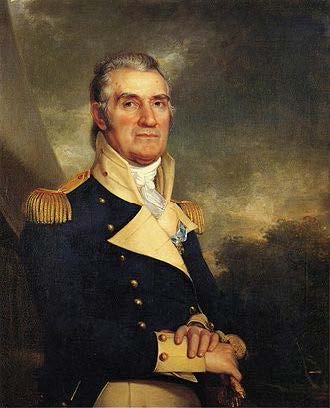
The British turned their attention to Baltimore, where the shipyard there sent many armed vessels to harass the British fleet and plunder mercantile, many of them under the banner of privateers. The British lost over sixteen hundred vessels during this war so the feelings of revenge was also on the minds of the invaders. While riding gayly at the head of their troops, General Ross and Admiral Cockran were assailed by a party of American advance troops and Ross was shot mortally wounded from his horse. The American General John Stricker, with over 3000 troops was there to defend Baltimore. Another 6000, under commanding General Samuel Smith, were in reserve.
Early on the morning of September 11, 1814 Admiral Cockrane entered the Baltimore Harbor and Colonel Brooke, who took over the command after Ross’s death, engaged in a land battle with the Americans outside of the city. On the same day the battle of Plattsburgh, NY was fought, and the British General Prevost was sent vanquished back to Canada, the northern invasion was finally halted and reversed. When the victorious British left Washington, some weeks prior, they took prisoners with them and on board their vessels they had with them Doctor Beans, a beloved physician of Upper Marlborough. Francis Key, a patriot and gentleman of culture consented to engage the British to procure his release, and went with Mr. Skinner of Baltimore, under the flag of truce, and was allowed to board the fleet, now in Baltimore Harbor.
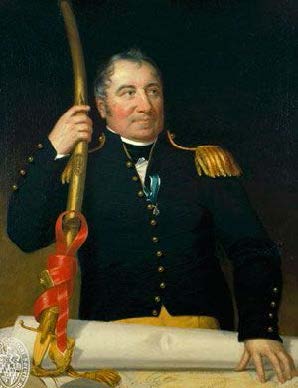
Being in preparation to attack Fort McHenry, the obstacle guarding the city with a moderate battery of cannon and one thousand men under Major George Armistead, the three men now enjoined, were refused leave and stayed on the British vessel. An attack upon the fort by the large British fleet was now engaged and rockets, mortars, cannon and flares bombarded the defenders. Francis Scott Key, Mister Skinner and Doctor Bears paced the deck and watched the inferno while Colonel Brooke pressed the attack upon the city with British troops.
The cannonade lasted twenty-five hours. During the attack the fleet tried moving forward but was severely repulsed by the cannons from the fort. Many of the ships were damaged and the grand assault was failing. The smoke and fog of the early morning was wanning after the perilous assault all the night of September 13th, the three anxious watchers could finally see thru the dim of the brightening day and one remarked, “our flag was still there!”. While pacing that deck and watching the bombardment, Francis Scott Key composed what became our American Anthem, “The Star-Spangled Banner.”
Admiral Cockrane and Colonel Brooke agreed that the capture of Baltimore was not to be accomplished and on the morning of September 14th the army and fleet left Baltimore Harbor. The three men were returned their freedom and the war in the North and most of the eastern coast was coming to an end. On December 28 a Treaty of Peace was ratified in London just prior to General Jackson defeating the British in the Battle of New Orleans on January 8. Essentially, the war was over before the carnage in New Orleans. Then the Treaty was ratified by the United States Senate on February 17, 1815. The Second War For Independence was over but the Americans still needed to grow an army and powerful Navy to insure peace thru strength.
Those of you who spit on the police, stamp and burn our glorious flag under protest, who defile the American honor won so bravely by so many fallen patriots before your being, should remember our waving stars and stripes, which has endured so much fury and bloodshed, as Francis Scott Key soundly observed that our flag was still waving proudly amid the defiance of tyranny and subversion, that you should cherish it and fly it proudly every day of your lives.
Cathy and I stood on the deck of the USS Constitution moored in Baltimore Harbor and looked out at the remnant of Fort McHenry and could only imagine the feeling of those men in 1814 on seeing that our flag was still waving; the moment brought tears to our eyes.
The War of 1812 was pretty much a draw between the warring factions; Canada got its permanent border with the United States, the British lost again to American determination but the United Sates went on to become a formidable Naval Force in the world. Most of her victories were borne at sea or on the Great Lakes. Our US Frigates were nothing to sneer at throughout the Atlantic.
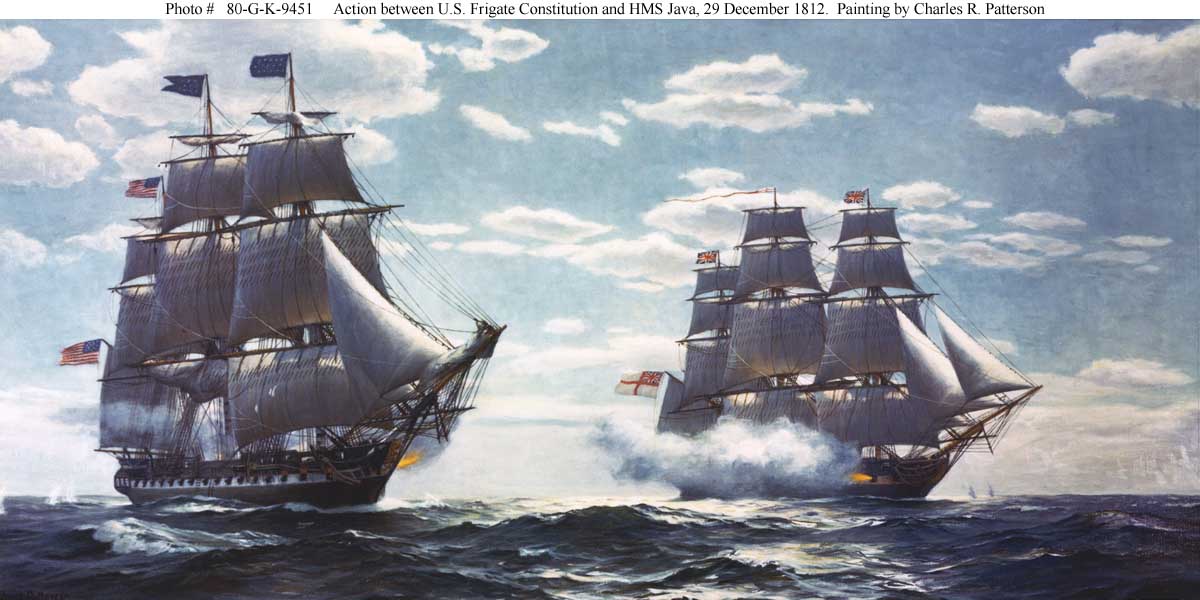
America became of age with this Second War of Indepedence and her influence all over the American Continent was to come to being. Not many people are aware of the fact that Dolly Madison, highly energized wife of the President, a fighting Quaker, an avid organizer of lavish parties affectionetly known at the White House as “Squeezers” because of all the people who fit into the party rooms, was also the very first wife of our American Presidents to become known as the First Lady.
For saving the valuables of the White House including the still displayed painting of George Washington and the precious parchment on which our Declaration of Independence was penned, I say you surely deserve the honor and from all, our fervent Thank You!
Actually, the White House was not entirely burned and destroyed on that fatefull day in August and below is a period painting of the remains of that great structure. Hail to the Chief.
The painting “The President’s House” by George Munger shows the White House after it was burned by British soldiers August 24, 1814, durring the War of 1812. U.S. Library of Congress Note

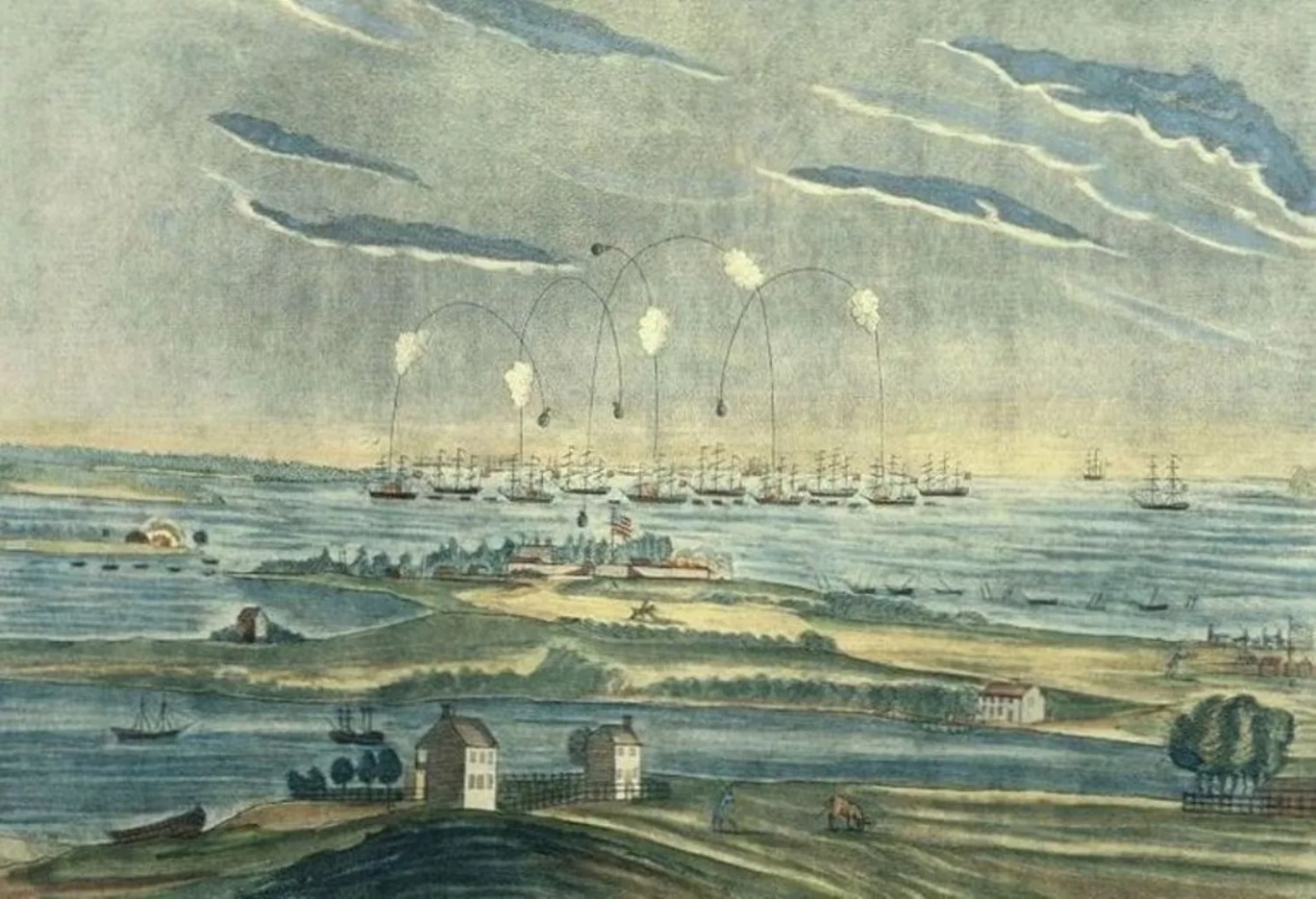
Note: Much of this account was taken from the pages of the six volume set of “Our Country, a Household History for all Readers.”
“From the Discovery of America to the Present Time.” By Benson J. Lossing, LL.D.
Published in NY by Henry J. Johnson 1878.